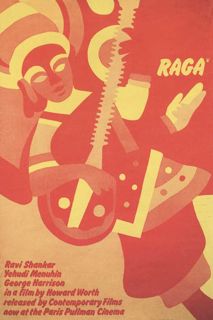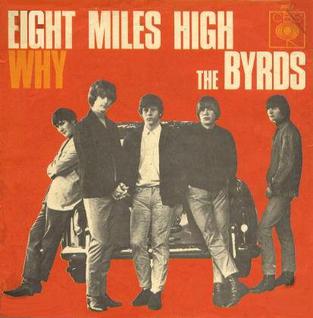Related Research Articles

Ravi Shankar was an Indian sitarist and composer. A sitar virtuoso, he became the world's best-known export of North Indian classical music in the second half of the 20th century, and influenced many musicians in India and throughout the world. Shankar was awarded India's highest civilian honour, the Bharat Ratna, in 1999.

Ustad Alla Rakha Qureshi, popularly known as Alla Rakha, was an Indian tabla player who specialized in Hindustani classical music. He was a frequent accompanist of sitar player Pandit Ravi Shankar and was largely responsible for introducing Tabla to the western audience.

Raga rock is rock or pop music with a pronounced Indian influence, either in its construction, its timbre, or its use of Indian musical instruments, such as the sitar and tabla. In addition, rock music from the 1960s and 1970s that incorporates South Asian musical influences and instruments, along with Western ideas of the Indian subcontinent, is often regarded as raga rock.
Ethno jazz, also known as world jazz, is a subgenre of jazz and world music, developed internationally in the 1950s and '60s and broadly characterized by a combination of traditional jazz and non-Western musical elements. Though occasionally equaled to or considered the successor of world music, an independent meaning of ethno jazz emerged around 1990 through the commercial success of ethnic music via globalization, which especially observed a Western focus on Asian musical interpretations. The origin of ethno jazz has widely been credited to saxophonist John Coltrane.
Indo jazz is a musical genre consisting of jazz, classical and Indian influences. Its structure and patterns are based on Indian music with typical jazz improvisation overlaid. While the term itself may be comparatively recent, the concept dates at least to the mid-1950s. Musicians including John Coltrane, Yusef Lateef and others reflect Indian influences.

The Avant-Garde is an album credited to jazz musicians John Coltrane and Don Cherry that was released in 1966 by Atlantic Records. It features Coltrane playing several compositions by Ornette Coleman accompanied by the members of Coleman's quartet: Cherry, Charlie Haden, and Ed Blackwell. The album was assembled from two unissued recording sessions at Atlantic Studios in New York City in 1960.

Raga is a 1971 documentary film about the life and music of Indian sitarist Ravi Shankar, produced and directed by Howard Worth. It includes scenes featuring Western musicians Yehudi Menuhin and George Harrison, as well as footage of Shankar returning to Maihar in central India, where as a young man he trained under the mentorship of Allauddin Khan. The film also features a portion of Shankar and tabla player Alla Rakha's acclaimed performance at the 1967 Monterey Pop Festival.

Improvisations is a 1962 LP album by Ravi Shankar. The opening piece is based on music from Shankar's score for Satyajit Ray's 1955 movie Pather Panchali with flutist Bud Shank playing in Indian style. Shankar composed "Fire Night" influenced by the 1961 Los Angeles fires and the song features jazz musicians Shank (flute) and Gary Peacock (bass) improvise over Indian percussion instruments. The concluding ragas are in classical Indian style: the first raga, Kirvani, with South Indian origin, and the second, Rageshri, with North Indian origin. The album was released in CD format by Angel Records in 1999 and has been described as a "visionary recording" by AllMusic reviewer Heather Phares.
San Francisco Jazz Festival is an annual three-week music festival produced by SFJAZZ, a non-profit organization dedicated to jazz and jazz education.
This is a timeline documenting events of jazz in the year 1961.
Ravi Shankar had numerous solo recordings published, including these:

"Why" is a song by the American rock band the Byrds, written by Jim McGuinn and David Crosby and first released as the B-side of the band's "Eight Miles High" single in March 1966. The song was re-recorded in December 1966 and released for a second time as part of the band's Younger Than Yesterday album.
Paul Livingstone is an American sitarist, composer and multi-instrumentalist. He is one of the few American disciples of Pandit Ravi Shankar, also trained under Rajeev Taranath and Amiya Dasgupta all of the Senia Maihar Gharana.

Ravi Shankar's Music Festival from India was an Indian classical music revue led by sitarist and composer Ravi Shankar intended for Western concert audiences and performed in 1974. Its presentation was the first project undertaken by the Material World Charitable Foundation, set up the previous year by ex-Beatle George Harrison. Long a champion of Indian music, Harrison also produced an eponymous studio album by the Music Festival orchestra, which was released in 1976 on his Dark Horse record label. Both the CD format of the Ravi Shankar's Music Festival from India album and a DVD of their performance at the Royal Albert Hall in London were issued for the first time on the 2010 Shankar–Harrison box set Collaborations.

In Concert 1972 is a double live album by sitar virtuoso Ravi Shankar and sarodya Ali Akbar Khan, released in 1973 on Apple Records. It was recorded at the Philharmonic Hall, New York City, in October 1972, and is a noted example of the two Hindustani classical musicians' celebrated jugalbandi (duet) style of playing. With accompaniment from tabla player Alla Rakha, the performance reflects the two artists' sorrow at the recent death of their revered guru, and Khan's father, Allauddin Khan. The latter was responsible for many innovations in Indian music during the twentieth century, including the call-and-response dialogue that musicians such as Shankar, Khan and Rakha popularised among Western audiences in the 1960s.
Shamim Ahmed Khan was a sitarist and composer, and notably, a student of Pandit Ravi Shankar. His solo recording debut was at the age of 29. Shamim had performed in Carnegie Hall, at the Lincoln Center, at the Griffith Center, among other concert halls. Although an exponent of Indian classical music, he was also associated with western musicians such as Buddy Rich, and Paul Horn among others.

Ravi Shankar: In Celebration is a compilation box set by Indian classical musician and composer Ravi Shankar, released in 1996 on Angel Records in conjunction with Dark Horse Records. The four discs cover Shankar's international career, from the 1950s to the mid 1990s, and include recordings originally released on the World Pacific, HMV, Angel, Apple, Dark Horse and Private Music record labels. Shankar's friend George Harrison compiled and co-produced the set, which was issued as part of year-long celebrations for Shankar's 75th birthday.

Collaborations is a four-disc compilation box set by Indian classical musician Ravi Shankar and former Beatle George Harrison. Released in October 2010 on Dark Horse Records, it compiles two studio albums originally issued on that label – the long-unavailable Shankar Family & Friends (1974) and Ravi Shankar's Music Festival from India (1976) – and Chants of India, first issued on Angel Records in 1997. Although all three albums were originally Shankar releases, for which Harrison served in the role of music producer and guest musician, both Shankar and Harrison are credited as artists on the box set. Each of the collaborative projects represents a departure from Shankar's more typical work as a sitarist and performer of Hindustani classical ragas, with the box set showcasing his forays into, variously, jazz and rock, Indian folk and orchestral ensembles, and devotional music.

Ravi Shankar's Festival from India is a double album by Indian musician and composer Ravi Shankar, released on World Pacific Records in December 1968. It contains studio recordings made by a large ensemble of performers, many of whom Shankar had brought to the United States from India. Among the musicians were Shivkumar Sharma, Jitendra Abhisheki, Palghat Raghu, Lakshmi Shankar, Aashish Khan and Alla Rakha. The project presented Indian classical music in an orchestral setting, so recalling Shankar's work as musical director of All India Radio in the years before he achieved international fame as a soloist during the 1960s.
Shambhu Das is an Indian classical musician and educator. He is best known for his long association with Ravi Shankar, on whose behalf Das has acted as an ambassador for Indian music in Canada since the early 1970s, and his friendship with George Harrison of the Beatles, whom Das helped teach sitar in 1966. His assistance in Harrison's immersion in Indian culture helped inspire the Beatles' career direction and, due to the band's popularity and influence, the direction of the 1960s counterculture. In 1970, Das established the Indian Music Department at Toronto's York University, where he taught for four years.
References
- Farrell, G. (1988), "Reflecting Surfaces: The Use of Elements from Indian Music in Popular Music and Jazz." Popular Music 7, pages 189-205.
- Manuel, P. (1988), "Popular music in India: 1901-1986." Popular music in India, volume 7, pages 157-176.
- Pinckney, Jr W.R. (1990), "Jazz in India: Perspectives on Historical Development and Musical Acculturation", Asian Music volume XXI, number 1, pages 35–77.
- Ian Carr (1991) Keith Jarrett: The Man and His Music (Grafton Books) ISBN 0-246-13434-8
- Neil Sorrell (1989) The North Indian Classical Sarangi: Its Technique and Role.